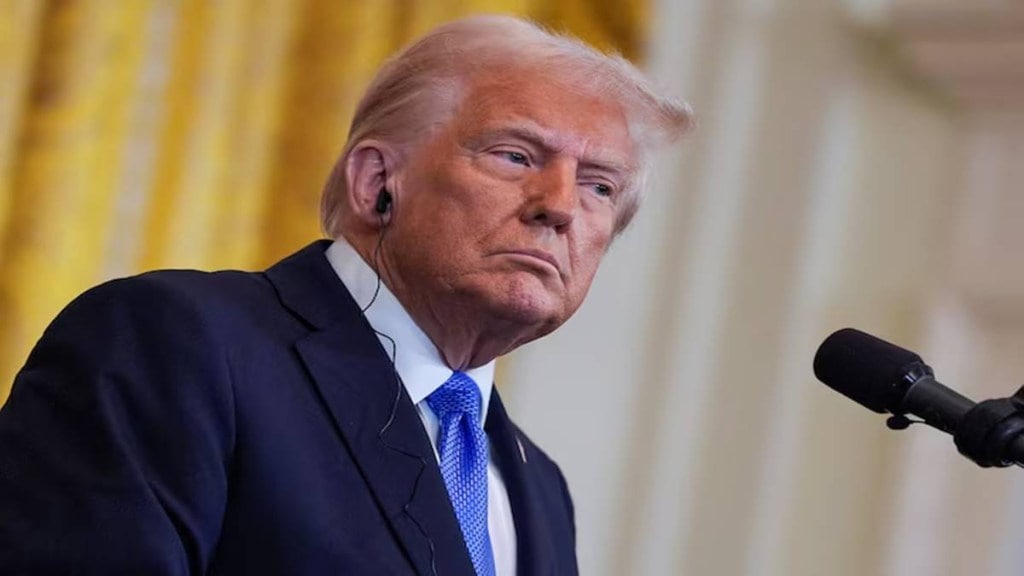A global trade war in the making? Who will be affected? What will be the retaliatory measures? Will countries consider reducing tariffs for the US and increasing imports from the country? US President Donald Trump on Monday announced his latest trade salvo of a 25 per cent blanket tariff on all imports of steel and aluminium into the US, while speaking from the White House. Announcing the move, Al Jazeera quoted Donald Trump saying that US industry has been “pummelled by both friend and foe alike”. He said, “It’s time for our great industries to come back to America. We want them back to America. This is the first of many,” while maintaining that the tariff hike would apply to all countries with “no exemptions, no exceptions”. The announcement comes just days before Prime Minister Narndra Modi’s planned visit to the US.
Per an analysis report by Nomura, emerging Asian economies (India, Thailand, China) have higher relative tariff rates (on US exports) and are thus at risk of higher reciprocal tariffs, whereas much of developed Asia (Korea, Singapore) have FTAs with the US and are less at risk. However, it further maintained that these countries are exploring options to strike a deal with the US. “We expect Asian economies to step up their negotiations with Trump. India is considering reducing tariffs on over 30 items and preparing to increase purchases of US defense and energy. Thailand is also looking to increase imports of US goods, like ethane and agricultural products. If successful, they could strike a deal eventually,” said Sonal Varma, Chief Economist for India and Asia ex-Japan at Nomura.
By definition, reciprocal tariffs mean imposing the same tariff rate on imports from other countries as other countries impose on US exports.
Who’s at risk?
Nomura used the World Integrated Trade Solution (WITS) database to compare Asia’s tariffs on the US at a two-digit HS product level, and vice versa. The brokerage firm arrived at the following conclusions:
– India (9.5 per cent weighted average effective tariff on US exports to India versus a 3 per cent tariff rate on India’s exports to the US), Thailand (6.2 per cent versus 0.9 per cent) and China (7.1 per cent versus 2.9 per cent) have much higher effective tariff rates on the US. On the other hand, countries like Singapore and South Korea, that have free trade agreements with the US, are safer from the reciprocal tariff.
– In terms of product categories, agricultural products and transportation sectors stand out. “High tariffs on the agriculture sector are common in most developing Asian economies, for both economic and political reasons, which makes it a tougher sector for governments to negotiate on. The transportation sector, on the other hand, which includes Asia’s exports of motor vehicles, has a scope for compromise. Asian policymakers could end up lowering their domestic tariff rate for these products,” Nomura said.
– Per the report, other sectors with higher relative tariff rates in Asia include: India (textiles, footwear and chemicals), China (textiles), Philippines (plastic and rubber) and Thailand (footwear and miscellaneous manufacturing).
Based on its analysis, Nomura maintained that over 90 per cent of the exports of India, the Philippines, Thailand and China (destined for the US) have higher relative tariff rates and so are at higher risks of reciprocal tariffs. Indonesia, Malaysia and Vietnam are in the middle of the pack, while Singapore and South Korea are least exposed, it added.
Impact on India
India definitely stands out as having much higher relative tariff rates and thus is exposed to reciprocal tariffs, said Aurodeep Nandi from Nomura. The US accounts for approximately 18 per cent of India’s total exports and the country is India’s largest export destination. “Key exports include electrical/industrial machinery, gems & jewellery, pharmaceuticals, fuels, iron & steel, textiles, vehicles, apparels, and chemicals, among others, of which iron & steel and aluminium account for nearly 5.5 per cent of the total,” the Nomura report stated.
Earlier in 2019, Donald Trump had called India “tariff king” and had claimed that the country imposes “tremendously high” tariffs on American products. In his most recent conversations with Prime Minister Narendra Modi, Donald Trump had emphasised the need for India to procure more American-made security equipment and move towards “a fair bilateral trading relationship”.
Finance Minister Nirmala Sitharaman, in her Budget 2025 speech, had announced the reduction in import duties on products across electronics and textiles sectors, and also high-end motorcycles. Nomura said, “India also offered the Trump administration an early political win by agreeing to take back over 100 illegal immigrants. It is also proactively considering reducing tariffs on over 30 items, including luxury vehicles, solar cells and chemicals. This week, Prime Minister Modi is visiting the US, where reports suggest a timeline to agree upon a “mini” trade deal could be proposed along with talks on defence cooperation, energy, immigration and H1-B visa issues.”
Ultimately, Nomura maintained, India is exploring options to strike a deal with the US to avoid higher reciprocal tariffs in the near term.

